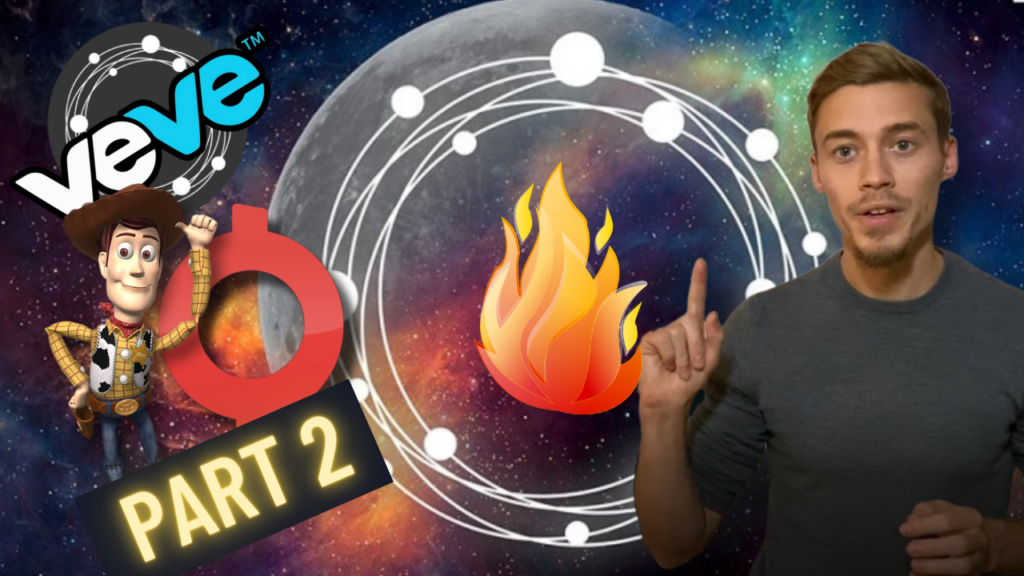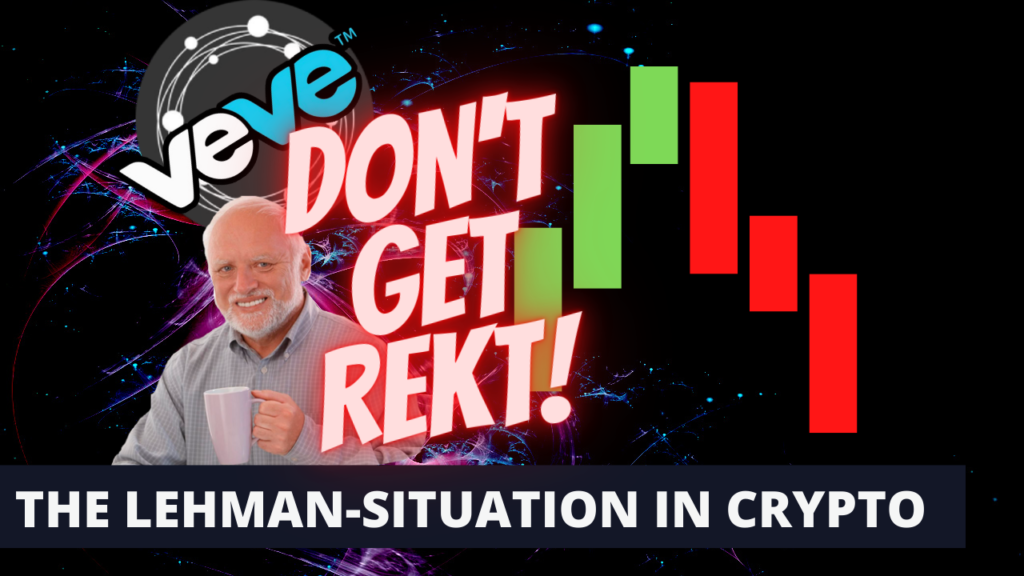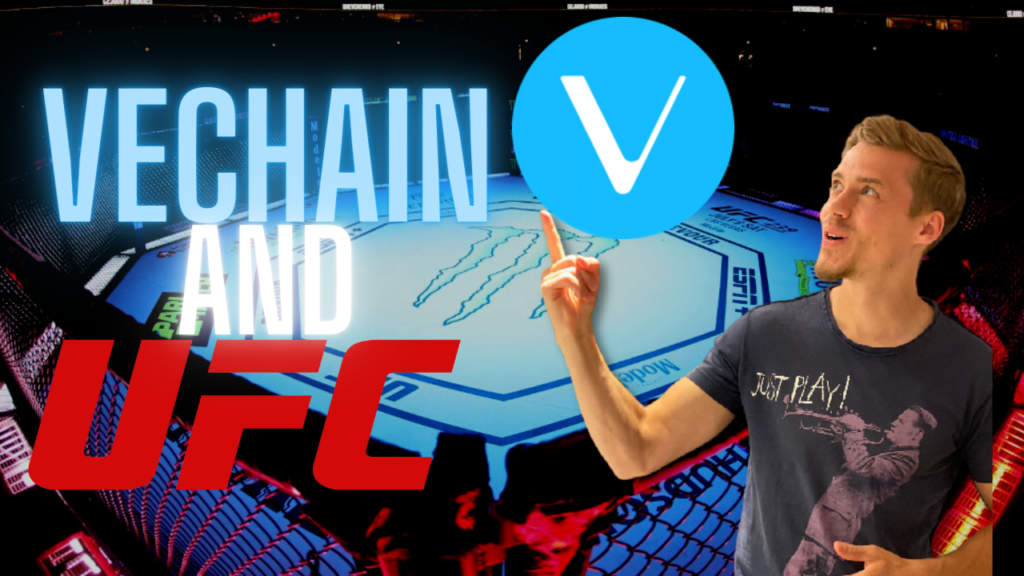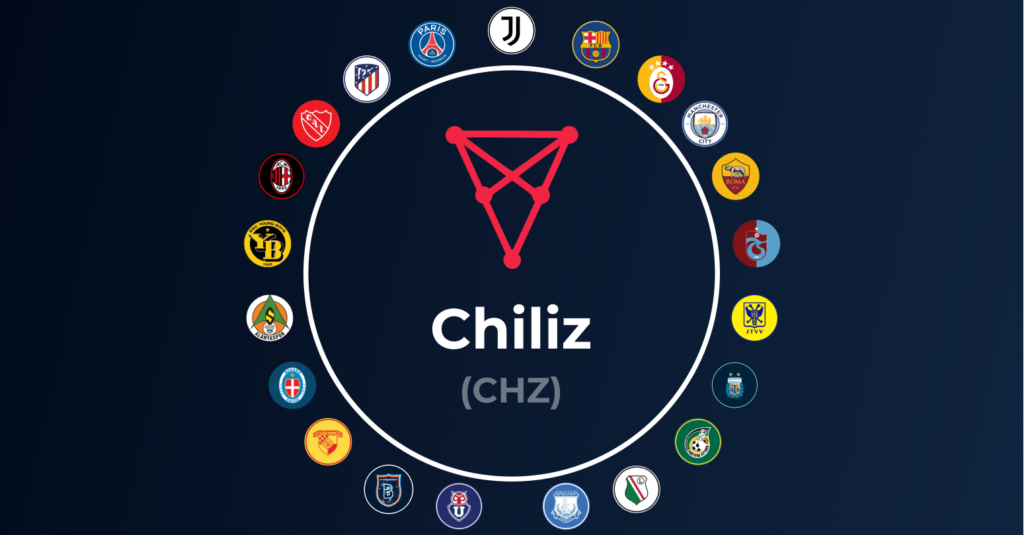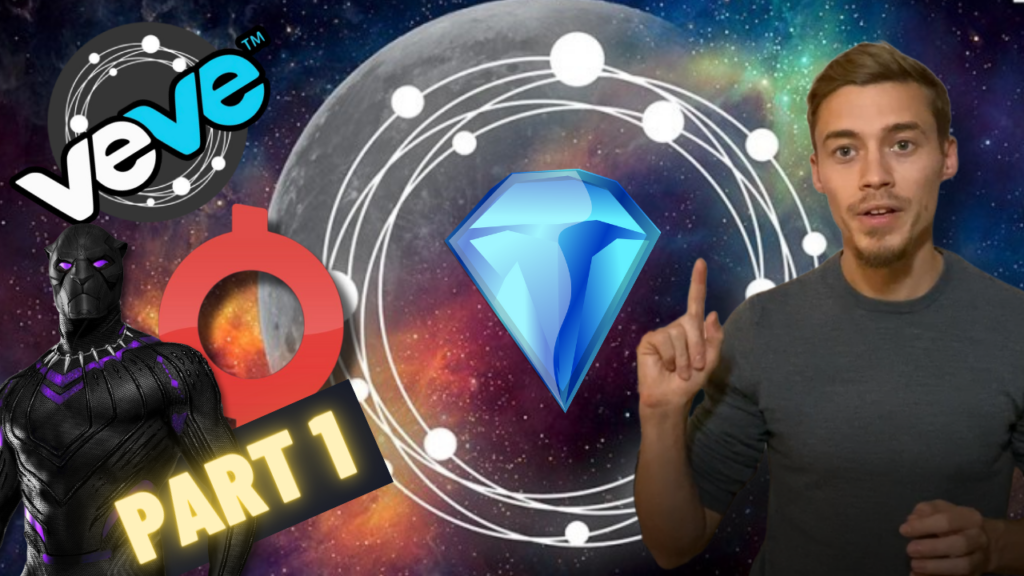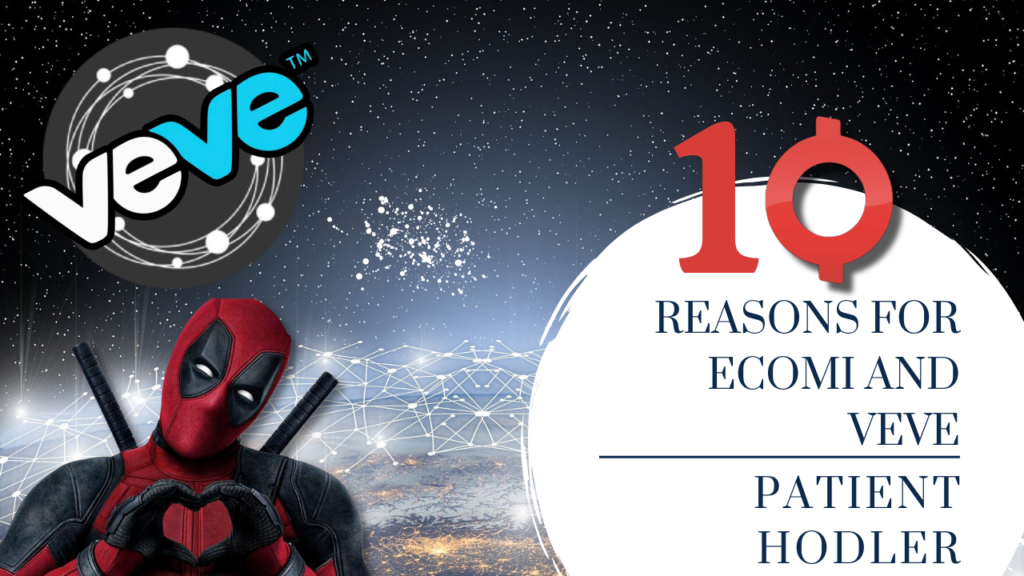This is part two of the article/video series that ultimately leads up to answering the question whether it is a good idea to invest in the Ecomi token or not and which could be a price prediction for the bullrun after the next Bitcoin halving which occurs in May 2024 and will then probably result in a run up by the end of 2024. For your overview: Part 1 discusses how Ecomi gets value, Part 2 discusses the burn mechanics, Part 3 was recently added to the plan where I will list and analyse the major concerns with this project, Part 4 will discuss the availability of the OMI token, Part 5 will outline lockups, staking and passive income, Part 6 will be about the development of the market segment and the final part number 7 will outline the path to mass adoption and include the long awaited price prediction for the Ecomi (OMI) token for the coming bull run.
A cryptocurrency such as the Ecomi token that holds value can increase in price once it has a finite token supply. In those cases a deflationary token supply can act as a boosting factor as we have seen with other deflationary tokens like Etherium (ETH) in the previous years. As outlined in Part 1 of this article series only value can give the fuel to price increases but a deflationary supply will lead to explosive moves to the upside once the first supply and demand shocks happen. We have also discussed in the previous part that the utility for the Ecomi token is today almost zero besides utilization as a currency on the IMX market places and some minor marketplaces in that very ecosystem. Therefore the only price increases for the moment are speculative reactions to the overall dynamic of the crypto space and even broader macro economical situation. One thing is very important: Please keep at all moments in mind with everything that is said here that the effects outlined will only impact the token price once certain milestones are achieved. These are most importantly: The implementation of the Omi Utility Program and with that Ecomi to NFT on the Veve App and other NFT market places, The listing of the Ecomi token on most major and not major exchanges, the implementation of cash out functionalities such as MTL and Crypto Cashout to reinstate the trust of token investors in the Veve team which is mainly also the Ecomi team and obviously the onboarding of projects to the Ecomi token. If you have not read the previous article than I suggest you start there.
What are scarce goods?
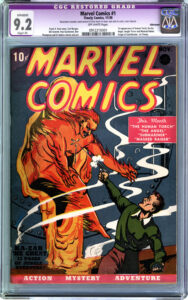 Before we dive into the exact breakdown of how the Ecomi token burn mechanics work, we need to take a short look at the history of deflationary assets and scarce goods in general. A scarce good is a good that has more quantity demanded than quantity supplied at a price of $0. Which means just
Before we dive into the exact breakdown of how the Ecomi token burn mechanics work, we need to take a short look at the history of deflationary assets and scarce goods in general. A scarce good is a good that has more quantity demanded than quantity supplied at a price of $0. Which means just
because your little cousins want to play with sand that does not make sand scarce when they fill the bucket. A good that is normally not scarce can become scarce quickly once the supply suddenly plummits. Think of the great famine in Ireland between 1845 and 1849 causing mass exodus for millions. There was just not enough food for everyone to stay alive. Again this is not a history channel and I will not digress too much here. On the other hand there are goods with a finite supply that are proven originals and of which the total supply has decreased as many items weathered away. A good example here is Marvel Comics #1. This one did originally cost only a couple of cents at the newspaper seller. Same as with many collectible items of the future today no one cares about owning them. If you see all those played and worn out Pokémon cards you might want to cry knowing what some of these are worth today. Marvel Comics #1 finally reached a point where only a couple of editions remained in good conditions and it became a highly collectible item. Suddenly the demand was way higher than the supply and the original can not be resupplied.
But just because something is deflationary it does not make it necessarily worth spending a dime on it. Let’s take cars first: the Lamborghini Huracan is an awesome car and the dream of many people. If you agree comment “Omi for Lambo” just for the bullmarket jo kes. There are 14.000 made of these in existance. The Lamborghini is scarce compared to the 6 Million Editions of Volkswage VII but even this car is still expensive because it has usability and in itself a car is still highly sought after and with production costs supply will never increase so much that a car would be worth only a dollar. Now the other side: a container full of rotten flesh. You know failed aggregate and a lot of sunlight. If I would start burning the rotten flesh pile it would become scarcer and scarcer but the price point would be still 0 because no one wants it. Just like the Elektra collectible on Veve. Anyways this is how scarcity interferes with the value proposition of a good and the intrinsic value it has. Water for example seems like an abundant good it covers 75% of the face of the earth and yet people die in consequence of lacking fresh and drinkable water. For some water is available in perceived abundance, for some it is enjoyment after running, for some it is coming in the last moment. Depending on how much supply you have. You all get the point. The important question with Ecomi is now are we burning Lamborghinis or rotten flesh?
kes. There are 14.000 made of these in existance. The Lamborghini is scarce compared to the 6 Million Editions of Volkswage VII but even this car is still expensive because it has usability and in itself a car is still highly sought after and with production costs supply will never increase so much that a car would be worth only a dollar. Now the other side: a container full of rotten flesh. You know failed aggregate and a lot of sunlight. If I would start burning the rotten flesh pile it would become scarcer and scarcer but the price point would be still 0 because no one wants it. Just like the Elektra collectible on Veve. Anyways this is how scarcity interferes with the value proposition of a good and the intrinsic value it has. Water for example seems like an abundant good it covers 75% of the face of the earth and yet people die in consequence of lacking fresh and drinkable water. For some water is available in perceived abundance, for some it is enjoyment after running, for some it is coming in the last moment. Depending on how much supply you have. You all get the point. The important question with Ecomi is now are we burning Lamborghinis or rotten flesh?

And with that ladys and gentlement we are coming to the jucy part of this article/video and that is everything that burns away Ecomi from the total supply and everything that burns away Ecomi from the circulating supply. Let’s start out with a quick look at the supply again so we are all at the same page. I will spare myself the work to create my own graphic for this one so I will use the pie chart of the homie Puddincheeks all credits to him. As you can see everything in red colors is the Non-Circulating-Supply and everything in blue colors is the circulating supply. Orange are tokens that are forever lost in the smart contract accidents. Only the light blue part is theoretically available on the exchanges for you and me to ape into. Besides value creation we want to see the blue part burn away.
The Burn Mechanics from the Veve App
The biggest token burner so far is the Veve App. It holds three wallets. The Reserve Wallet, the Vault wallet and the Burn wallet. Once you load up gems to the Veve App a part of the Ecomi tokens are being moved from the Reserve wallet into the vault wallet. But how much? A gem is always pegged to $1 and also needs to move inside the system with the equivalent amount of Omi tokens. Let’s do the easy math: If you load 100 gems at a pricepoint of 0,001 Omi for each Gem 1.000 Omi are moved out of the Reservewallet into the vault wallet. For imaginatory purposes you would say: The gem is forged out of 1000 omi. Good. I have 100.000 Omi forged into 100 gems.
Ecomi Token Burn Scenario #1 – Drop participation
Let’s say you take your 100 Gem bag of Omi and participate in a drop for 60 gems. Disney Golden Moments or whatever. That represents a direct sale for Veve and therefore a cashout of the 60 gems used. Whenever we purchase something on a drop in the “store” a 100% of the gems are being cashed out to Veve. And this results every time in a 100% burn of the 60.000 omi tokens forged in those gems. These 60.000 omi tokens are now moving from the vault wallet into the burn wallet.
Ecomi Token Burn Scenario #2 – Market participation
Ok now we have wasted 60 Gems on a drops that got us a high mint common and we came to realize that we can use our remaining 40 gems to grab a better mint or rarity from the market. Great so let’s ape those gems away. Purchase made and because it’s disney we have 6% licensor fee to them and 2,5% fee to Veve. These are a total 0f 8.5% cashout for external parties. This would be 3,4 gems meaning another 3400 omi moves from the vault wallet to the reserve wallet. With every transaction more gems are going into the pockets of Veve and the Licensors and more omi moves to the burn wallet.
Great so far but before we move on you would probably say: “but patienthodler who cares if omi moves from one wallet to another if it is already out of circulation?” Damn right my fellow Degen investor this is the critical point.
I will make this short. In the beginning Veve planned to take a part of the revenue and buy ecomi from the market to then put it into the reserve wallet. The thought was good but probably flawed in several ways. Remember when I said that a gem always needs to be forged out of as many Ecomi tokens as you need to have 1$? Right. So let’s say they would really take a billion tokens out of circulation into the reserve wallet. People would see it, figure that the token supply is decreasing massively and buy as much as they can. The price skyrockets to 1 cent and suddenly only 100 instead of 1000 omi are need per token. Awesome, but the problem is now people see that the burns are cut to 10% of what it was before so they would figure it might take 10 years to burn through the reserve. Sound familiar? So they would take profit the price drops the burns go up again and people buy again. So both sides would keep each other in check but slowly increasing the price. The biggest flaw in this system are regulatory issues but these will be discussed at a later point. One probable consequence of this is the splitting of Ecomi and Veve in two different legal entities held by Orbis. Part of the solution is that Ecomi can not use money to refill the reserve wallet. But there are other methods.
Ecomi Token Burn Scenario #3 – Epiko Regal
Indian story telling oriented tower defense game in the style of clash royale with the Name Epiko Regal which also has a market place to purchase several ingame items will use Ecomi. These items include ingame gold, lootboxes and NFTs. The game will come with it’s own token which gives holders special benefits and is only purchaseable with Ecomi tokens. Besides their play to earn oriented leader board system a share of 10% of the Ecomi tokens used in the Epiko shop will be moved to the Veve reserve wallet. Therefore it is a two step burn mechanic which in Step 1 removes omi from circulating supply and step 2 let’s it burn in the Veve App via the previously described process. The Ecomi will be transferred once per quarter. It is necessary to point out that this mechanic has not been implemented yet which means from the time of official implementation it will still take another 3 Months until the first Ecomi tokens from Epiko end up in the Veve reserve wallet. There is another problematic factor I see here which is the necessity to bridge Ecomi tokens over to Polygon to be able to purchase ingame items and NFTs with Ecomi tokens. This creates a natural barrier out of complexity. Most people have not enough knowledge in the crypto space. This is the very reason why Veve has implemented the gem dynamic into their App.
Ecomi Token Burn Scenario #4 – Feeshes & Feesh Arena
Grown as a project by the Omihomie Brock McBlockchain Feeshes is a project where unique NFT feesh are living in a digital customizable Feeshtank. Besides the fun feeshtanks, unique lore and other features this project also has a play to earn battleground in which allows feesh owners to beat the crap out of other feeshes in robotic battle suits. The play to earn mechanics shall be part of another video, let’s take a look at the play to burn aspect of this game. 1. 50% of all Ranked matches will be burnt at the end of the match. This is interesting because you do not need to own a feesh to play a match you only have to pay for it with a little bit of omi tokens. 2. Wager matches let feesh owners put down a pot to battle for of which 90% will be sent to the winner, 5% will go into the monthly price pool and 5% will be burnt. 3. Buy buying fun points you can basically get the right to comment on an ongoing match and either cheer for a party or harass them. 50% of the Ecomi tokens spent on fun points will be burnt. The project uses the same mechanic as Epiko Regal and therefore send the Ecomi tokens to the Reserve wallet where they are subject to the previously outlined burn machanics. As a last point to the feeshes project it is worth noting, that the arena is currently in beta and only feesh holders can play for the moment and it is necessary to first connect with the Immutable X Blockchain to enable the transactions even if you are not planning to use Ecomi tokens at all. Same as for the previous project needless to say that the normal mom and pop user will be unable to access this game. For block chain nerds only. Shoutout to Brock McBlockchain for this awesome project.
Ecomi Token Burn Scenario #5 – Canon Crisis, shoot to burn.
The next one is canon crisis which is a mini game where you have to shoot at a target with a canon that is shielded by a spinning obstacle. If you miss you lose a try. To regain trys or improve speed you can watch advertisments. The Ecomi token is then “pulled from the circulating supply and is sent to the reserve wallet with the following address (0xd9494d749ed554b2d2faab1a8e20d2b566410f00).” – Curtis M. Cooper the creator of Canon Crisis confirms. If you want to participate in the game you can download it for free in the Apple and Android Appstores. We should note here that this is the only project so far that instantly burns from the circulating supply. Cooper states on Twitter that is game had removed over 550k $OMI from circulating supply” Over the last month, which is an average burn of 18300 OMI tokens per day.
Ecomi Token Burn Scenario #6 – Ecomi Utility Program
The OMI Utility Program is a work-in-progress, a first concept. The information given is an initial outline of the various elements in the OMI Utility program. It is clear so far that there are various staking tiers where stakers get benefits if they stake the ecomi token with in the Veve wallet. This has nothing to do with the staking offered by Ascendex right now. Once you lock up your tokens you have to wait a certain staking period of 30, 60 or even 90 days to get the benefits of a certain tier and move on to the next tier. Three burn mechanics come into play: 1) Fast tracking the staking period. Impatient hodlers can move directly to the next staking tier if they are accepting a 25% burn of their staked OMI token. For example if you want to get the rewards of staking Tier 1 instantly you need to lock $1000 wort of OMI which at the current price point is 1 Million OMI tokens and accept that 250.000 will be moved to the burn wallet. As for now staking Tier 3 is granted at a $10.000 lockup which would then be 2.5 Million Ecomi tokens burned to complete it instantly. We have already heard that there are Tiers four and five planned which could offer 25.000 and 50.000 Dollar lockups. Not only will you have a significant lockup period but also imagine the burns at a bear market price like these. Obviously those instant completions will be a no brainer for all Ecomi whales as it opens up the playground to massive whale games within the Veve App. Flexing with low mintnumbers in showrooms, burning away collectibles, enjoying expanded AR features and most importantly: renting collectibles. Another not so insignificant factor are reduced buyer fees when buying collectibles with Ecomi tokens. Yes you heard right. Lock up OMI to purchase collectibles with OMI. The second dynamic is a so called breakage fee. Imagine staking in Tier 3 which is a 90 day period and now the conditions are changing. This could be anything. A massive Bullrun that brings OMI all the way up to the Moon, to Mars, to Cavell Andersons Exoplanet of $10. Then you might sacrifice the 10% breakage fee to move these tokens to an exchange and take some juicy profits. This burn fee is lower as you are not going to complete the Tier and you will not achieve the benefits of this specific Tier. In that case no Mintflexing for you #Hidethepainhodler. Anyways, the third and final mechanic is a buyers fee when purchasing collectibles that are listed for OMI tokens. The sellers fees (2,5% – 8,5% as mentioned before) are to be paid in gems, which means they are causing still burns from the reserve wallet and not from the circulating supply. However, the buyer needs to contribute a small fee of 0,5% (Tier 2) or 0,25% (Tier 3) of the total selling price of the collectible in OMI tokens which are directly moved to the burn wallet, thus reducing the overall price of the OMI token. Also here we need to remember that this is a mere promise and has not been implemented and therefore no tokens have been burned so far by these mechanics.
The Ecomi Token Burn Mechanics – Final Conclusions
We have seen that the dynamics around the Ecomi token are increasing. Community projects start burning Ecomi tokens and many mechanics are still to be rolled out. If they were to be executed in this manner a rapid decline would be seen for the circulating supply of the Ecomi (OMI) token. Especially because many mechanics are bound to the dollar value of total Ecomi and not to the amount of OMI itself. This means: Bear markets technically could burn the hell out of this token. And as outlined in the beginning of this video and in Part 1 of this video series it all depends on the value creation in combination with the Burns. The burns are only a boosting factor such as TVL (Total Value Locked) is only a boosting factor. Burning garbage does not increase the value of garbage. And with that I am at the End of this part of the Ecomi (OMI) token analysis.
